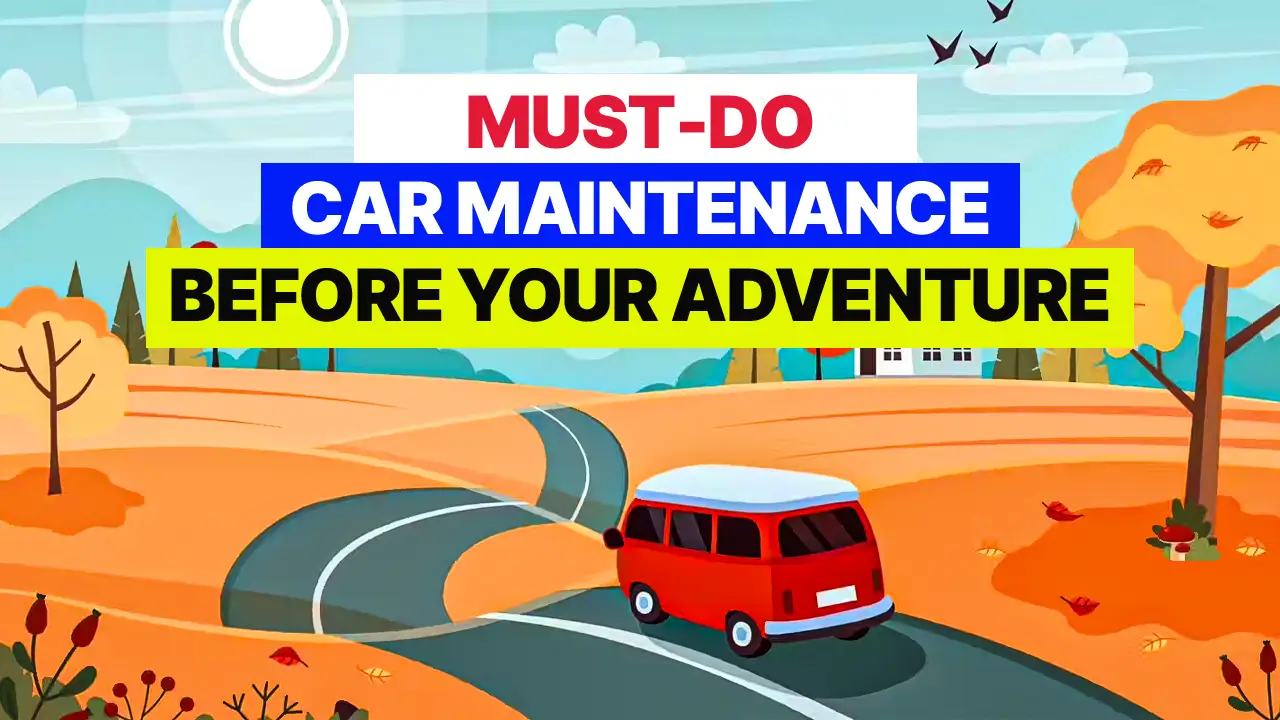It is exciting to plan a road vacation, but your automobile is prepared for the journey. You can guarantee the safety of your journey and prevent unforeseen malfunctions with appropriate maintenance. Before you drive, follow this thorough advice to help you prepare your vehicle.
Car Maintenance Tips to Keep Your Road Trip Safe and Hassle-Free
Inspect Your Tires
Your car’s primary point of contact with the road is its tires. The first step is to use a pressure gauge to check the tire pressure. Inflate them to the appropriate levels specified by the manufacturer, located on the driver’s door frame or in the owner’s manual. Handling and fuel efficiency can be impacted by tires either overinflated or underinflated.
Check Fluid Levels
Several fluids are necessary for your car to run efficiently. Check the oil’s color and level with the dipstick. Before the journey, change the oil if it seems unclean or low.
To prevent the engine from overheating, check the coolant level. Verify the levels of the power steering fluid, transmission fluid, and brake fluid. To guarantee good vision in the event of rain or dirt on the road, remember to check and refill the windshield washer fluid.
Examine the battery.
A weak or dead battery could ruin your journey. Use a voltmeter to verify the battery charge and get it checked out at an auto shop. Use baking soda and water to clean the terminals since corrosion can make connections difficult. If your battery is three years old or shows deterioration, you should consider replacing it.
Check the Brakes
Having brakes is essential for safety. Keep an ear out for any clicking, grinding, or squealing sounds that can be signs of worn-out shoes or pads. Verify the brake pad thickness and replace any less than 1/4 inch thick. Check that the brake fluid is clear and at the proper level. Have it flushed and replaced if it is unclean or black.
Test the wipers and lights.
Driving safely requires visibility. Test all of the lights on your car, including the turn signals, brake lights, hazard lights, high beams, and headlights. Any burned-out bulbs should be replaced right away.
Check for stiffness or cracks in the windshield wipers. Replace them if they produce noise or leave streaks. Use a cleaning solution to remove dirt and grime from the washer reservoir.
Examine the cooling system.
The cooling system keeps your engine from overheating. Check the radiator for leaks or damage. Check for leaks, cracks, or loose clamps on the hoses. Verify that the coolant is the right amount and has the right antifreeze composition. You might wish to flush your coolant now if you haven’t done so in more than two years.
Test the heating and cooling systems.
If you are going somewhere warm, check that the air conditioner is functioning. Switch it on and see if the cooling is consistent. Refrigerant or repair may be necessary if it is not functioning properly. If you are going somewhere chilly, the heater will keep you warm.
Examine the Exhaust Unit
Damage to the exhaust system might result in hazardous emissions and reduced fuel efficiency. Examine the exhaust pipes for rust, holes, or loose connections. Listen for strange noises, such as loud roaring, which may indicate an issue. Have it fixed by a professional if required.
Modify the filters
If there is a buildup of dirt or debris in the engine air filter, replace it. Fuel efficiency and engine performance both increase with a clean filter. Have the cabin air filter checked as well. A clean cabin filter enhances the air quality inside the car and guarantees adequate ventilation.
- Nearly 30% of UK Drivers Believe Car Tax Should Be Based on Mileage — Survey
- Why Planes and Boats Escaped the Luxury Tax But Cars Didn’t
- Australia’s Headlight Confusion: Authorities Warn Drivers After Viral $250 Headlight Rule Goes Wild Online
- 2025 Hyundai Venue Facelift Launched in India – Full Details, Variants, and Price
- Royal Enfield Bullet 650 Unveiled at EICMA 2025: A Classic Legend Returns
Ensure Proper Alignment and Suspension
An alignment may be necessary if your automobile pulls to one side or vibrates while you’re driving. Uneven tire wear and handling issues might result from misaligned wheels. Look for leaks or damage in the suspension system, which includes the shocks and struts.
Pack Emergency Supplies
Emergencies can occur even with careful planning. Stock your toolbox with necessities such as jumper cables, a lug wrench, and a tire jack. Keep a portable air compressor, a first aid kit, and a flashlight with additional batteries with you. Keep water and a tire repair kit for the passengers and the vehicle.
